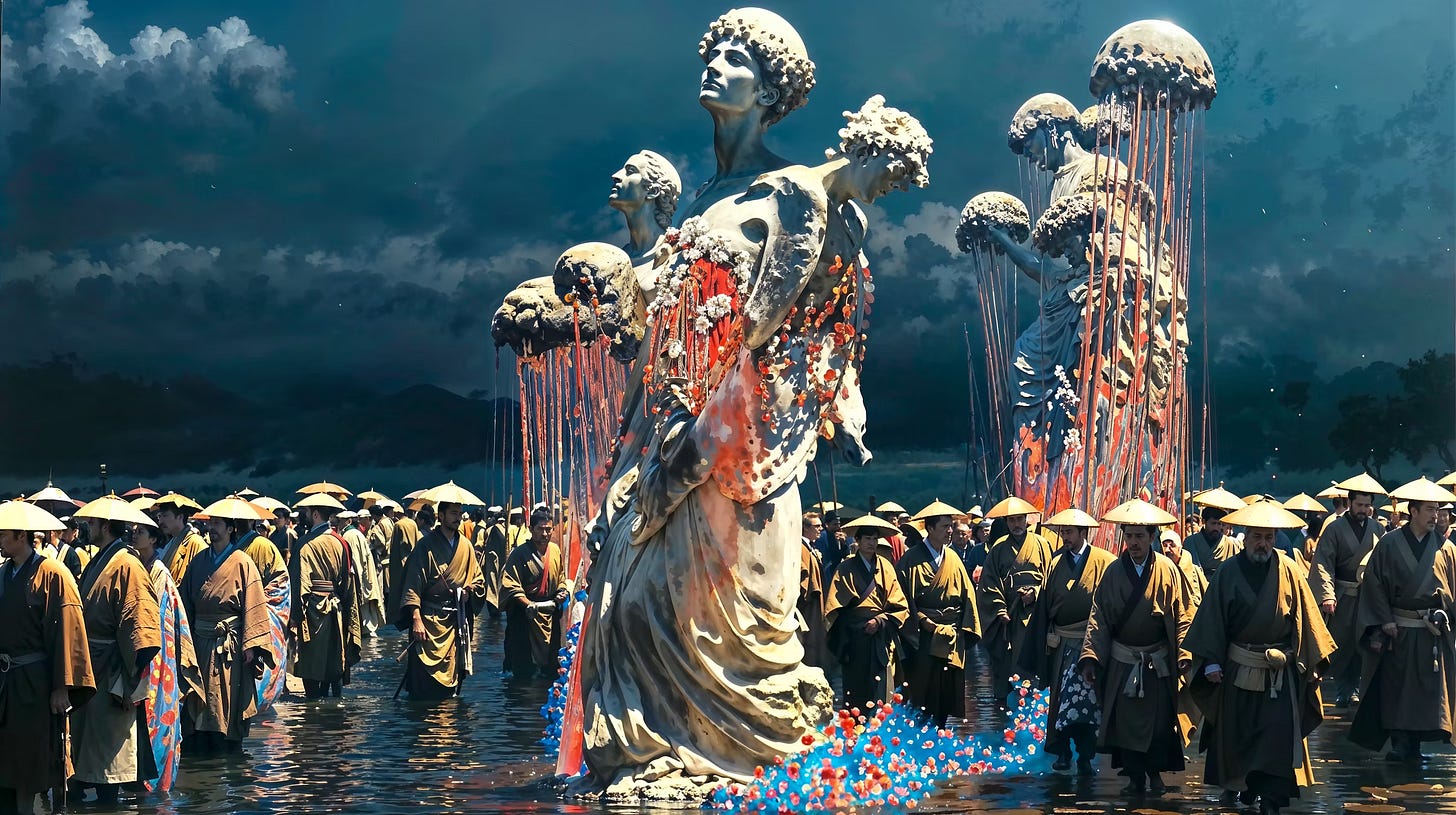John Provencher’s Dungeoneer and the Art of Self-Running Systems
John Provencher’s Dungeoneer isn’t just an image. It’s an engine in motion—the system is the image. Each work in the 1/1/64 series is a self-contained, generative maze, driven by a unique seed that encodes layout, textures, palette, and portrait. The portrait isn’t shown—it’s enacted. Stored as .json data, each piece is read and rendered by the machine in real time, like memory being processed and performed.

This is Level 1
Opening June 24th on Feral File, Console Spirituality—curated by LAN Party—treats each artwork as a level: a ritual space shaped by the aesthetics and architectures of games. Dungeoneer sets the tone with a system that runs on its own. No “Ready Player One,” no Start Button—just presence, conjured through code. With no mission to complete and no end to reach, the work becomes meditative, almost devotional.
This NFT Can Run Doom
Dungeoneer marks a significant expansion of Provencher’s practice—from image-making to system-building. Drawing on the engine logic of early first person shooter (FPS) games like Doom and Wolfenstein 3D, the work gestures not just at nostalgia, but at preserving early methods of real-time image construction. “I didn’t try to make it look retro,” Provencher says. “I just used old methods. Raycasting, pixel textures, etc. It’s not styled like a game from the ’90s… It’s just built like one.”
The result feels familiar but carries a new intent—less about interactivity, more about witnessing. A related work was exhibited on the Media Wall at Museum of the Moving Image in 2024, where its autonomous logic and contemplative pace played out at institutional scale—underscoring its shift from game mechanic to enduring artistic system.

Each collector receives a live, self-executing configuration of code and memory—not a static image or a playable game. A rarely applied method of hybrid on- and off-chain storage ensures long-term durability: if IPFS ever fails, the maze defaults to the last known data, preserving the system’s state and structure. It’s an elegant solution to one of digital conservation’s core challenges.
At a time when much digital art still mimics the structures of galleries or websites, Dungeoneer offers something else entirely. It reimagines the exhibition space as machine. By removing gameplay and control, it repositions the viewer—not as a player, but as a witness to ritualized motion. The repetition becomes meditative. The image becomes relic. The dungeon becomes temple.
Level 2: Emi Kusano, Data Pilgrims
In Data Pilgrims, Emi Kusano explores digital spirituality through mythological pilgrimage. Created in collaboration with AI, the series imagines anonymous wanderers traversing algorithmically generated landscapes—encountering spirit animals, drifting souls, and divinities. Drawing on Japanese mythology and spiritual archetypes, the works evoke a speculative world where prayer is reimagined through code, the glitch becomes sacred, and faith itself is rewritten by data.
The series builds on Kusano’s Catastrophic Forgetting (2024), which examined the memory-loss tendencies of neural networks. While Kusano’s broader practice is often defined by a photorealistic aesthetic—rooted in her background in photography—Data Pilgrims stands apart. Here, she adopts a painterly visual language, infused with flattened perspectives, atmospheric textures, and symbolic motifs drawn from ukiyo-e traditions and reimagined for the algorithmic age.
Glitch as Gospel
Each of the ten unique works was generated through a recursive AI process known as distillation—merging and evolving images across multiple iterations to produce hallucinatory transformations. This method doesn’t simply manipulate data; it renders it unstable, generating a dreamlike terrain where meaning fractures and recombines. Like the ambient logic of walking simulators, the works forgo objectives or resolution, inviting the viewer into a contemplative drift.
Despite the machine’s role in production, Kusano’s curatorial sensibility remains the guiding force. Her refined control of composition, color, and cultural iconography lends coherence to the series—anchoring the volatile output of AI in a clear aesthetic and conceptual vision. Data Pilgrims is not only an exploration of machine-generated myth, but a testament to how digital art can stage its own rituals—and create space for reflection within a culture of acceleration.
View, Collect, and Join the Conversation
We’ll be previewing works by Sabato Visconti and Keiken & Gabriel Massan on Monday, ahead of the Console Spirituality launch Tuesday, June 24 at 17:00 UTC (1pm EDT). The exhibition opens with a live conversation alongside programming partner Rhizome—set a reminder to view, collect, and join the discussion on the 24th. To learn more about the artworks or how to collect, email lauren@feralfile.com.








